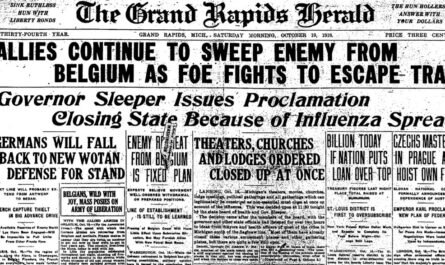Akron, Michigan, a quiet village in Tuscola County today, was once a thriving hub of industry and community life. In the early 20th century, Akron’s identity was shaped by two powerful forces: coal and the railroad.
This short video showcases rare postcard images capturing the town’s boom years. You’ll see Main Street bustling with horse-drawn sleighs, the towering coal mine employing dozens of local men, and the grain elevator standing as a reminder to the region’s farming strength.
The Railway Helped Grow Akron Michigan
Railroads were the town’s lifeline. The Detroit, Bay City & Western Railroad connected Akron’s industries to larger markets, allowing coal and crops to move quickly across Michigan. One striking image in the video shows the aftermath of a train accident—an unfortunate but very real risk of the era.
Community pride was just as visible as its industry. Annual parades and Memorial Day gatherings brought out crowds of residents, showing that despite hard work and economic swings, Akron’s spirit never wavered.
The Rise of Akron’s Coal Industry
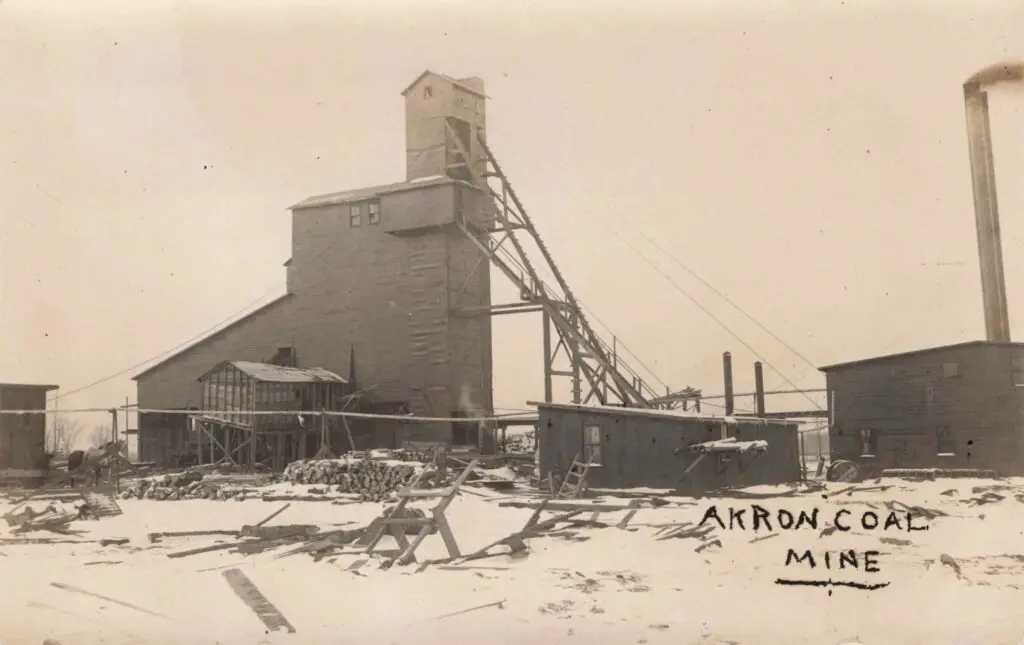
At the center of Akron Michigan history is its brief but important coal mining boom. Though coal mining is more commonly associated with Appalachia or Pennsylvania, Michigan’s Thumb region held several pockets of soft coal. In the late 1800s and early 1900s, exploratory shafts revealed shallow coal seams around Akron and neighboring Fairgrove. This sparked a small local mining industry that provided jobs and energy for nearby communities.
Photos from the period show Akron’s towering wooden coal headframes and simple surface buildings, surrounded by piles of lumber and slag heaps. The work was dirty and dangerous. Miners descended deep underground using rope-and-pulley systems or hoists, cutting coal by hand. Gas pockets, cave-ins, and poor ventilation were constant threats.
Unlike the larger industrial mines elsewhere, Akron’s operations were small-scale but meaningful to the region. The coal was often sold locally or shipped by rail to support nearby towns, factories, and even railroads themselves.
Video – Coal, Rails & Grit: Akron’s Old-School Hustle
Watch and learn about Akron’s role in Michigan’s Thumb region for three minutes. This glimpse into the past reveals how small towns like Akron powered Michigan’s growth and built lasting communities.
Akron’s coal, railroads, and tight-knit community defined its early 1900s boom. This quick video shows rare postcard images capturing the grit and pride of this Tuscola County town’s history. Dive into Akron Michigan history in under 3 minutes.
Main Street and Daily Life
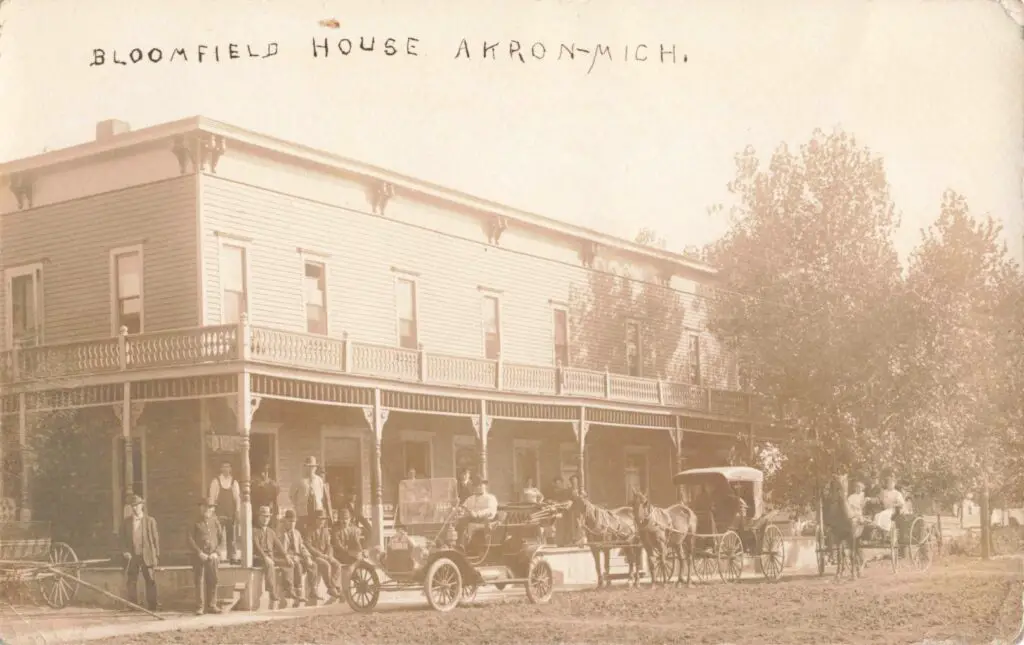
Akron Michigan history was not only about industry. Life on Main Street during the early 1900s reflected a tight-knit, self-sufficient community. General stores, hotels like the Bloomfield House and Hotel Patrick, livery stables, and blacksmith shops lined the streets. Horses, carriages, and sleighs were a common sight, especially during harsh Michigan winters.
The town’s businesses served both local farmers and transient railroad workers. Patrons gathered at the hotel, shared local news at the general store, and attended church or town hall meetings. Akron may have been small, but it provided everything residents needed to live and work.
Community Pride on Display
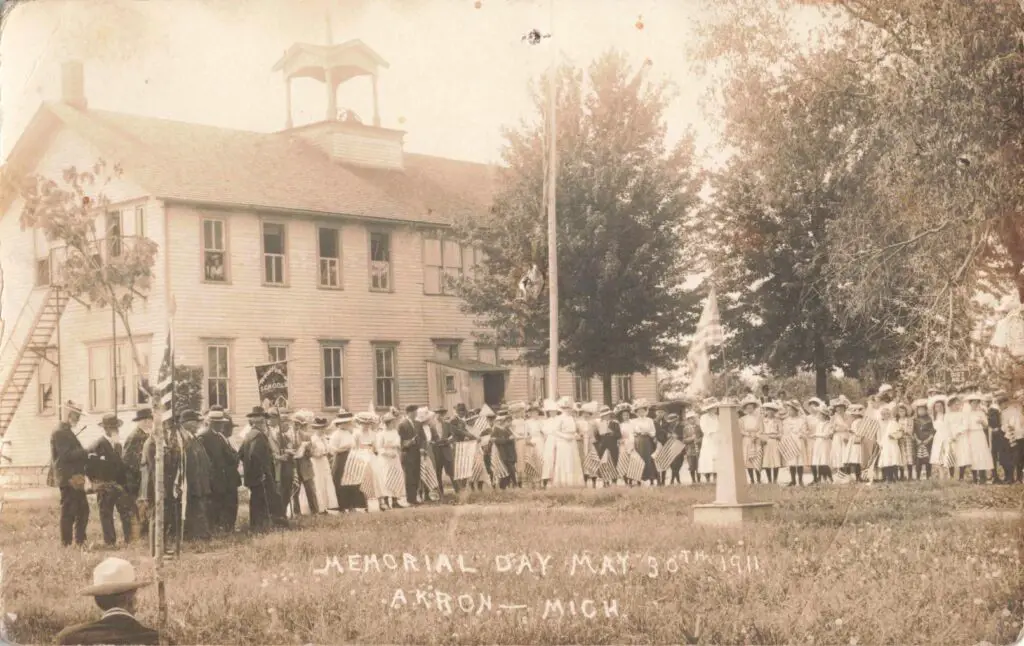
Community events remain an important part of Akron Michigan history. Photographs from Memorial Day parades in 1911 show residents gathered proudly to honor local veterans. School children waved flags alongside their parents, while marching bands performed patriotic tunes. These events were more than ceremonies; they were public affirmations of shared identity and resilience.
Even during times of economic uncertainty, Akron’s residents maintained a strong sense of place and purpose. These civic traditions helped foster unity among neighbors who often relied on each other for survival.
Agriculture Anchored the Economy
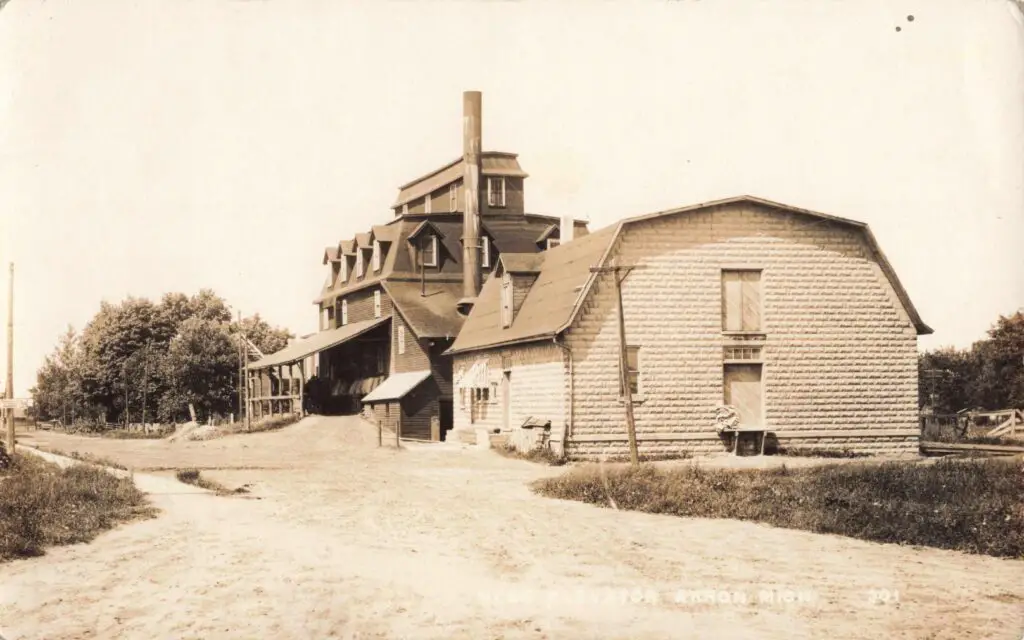
While coal mining and railroads added energy and transportation, farming remained the steady foundation of Akron Michigan history. The surrounding Tuscola County farmland produced wheat, oats, sugar beets, and corn. Large grain elevators, like the one pictured in historical images, stored and shipped the region’s agricultural output.
By the 1920s, many of Akron’s coal mines had ceased operation as larger fuel sources became available elsewhere. But the rich farmland continued to sustain families for generations, reinforcing agriculture’s long-term role in the town’s survival.
Akron Michigan History Preserved
Today, Akron Michigan history is kept alive through rare postcards and photos like those featured in this video. Though the mines have closed and the rail lines are mostly gone, Akron’s story remains one of hard work, adaptation, and community spirit.
Take a few minutes to watch this video presentation and witness Akron’s coal mines, railroads, parades, and businesses as they appeared over a century ago. These images offer a lasting record of a town that helped fuel Michigan’s early progress.



